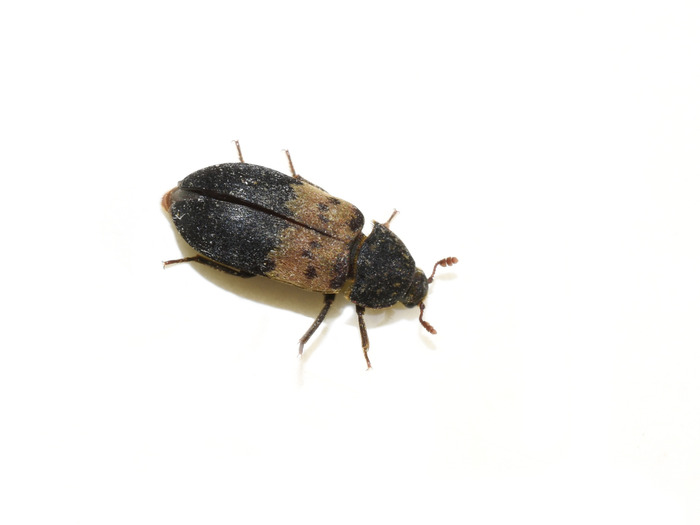Larder beetle (Dermestes lardarius)

The larder beetle is a damaging storage pest commonly found in animal-based products such as dried meat, leather, and feathers. It is a dark, oval-shaped beetle, and its larvae can cause significant damage in homes, museums, and food storage facilities.
Identification
The adult beetle is approximately 7–9 mm long, dark in color, and has a lighter, yellowish-grey transverse band near the head on its wing covers. The larvae are brown, elongated, and hairy, and may burrow into structures when searching for a place to pupate.
Habits
- Prefers dried meat and other animal-based products, such as sausages, dried fish, and cheese
- Also infests preserved animals, stuffed birds, and museum specimens
- Larvae may burrow into wood, wool, or other materials, causing secondary damage
- Found in storage areas, attics, kitchens, and even in the remains of dead rodents or birds
- Can reproduce rapidly, especially in warm indoor environments where food sources are available
The larder beetle can go unnoticed for a long time and spread widely, making eradication difficult without professional assistance.
Control
If larder beetles are detected in food or storage areas, professional pest control is recommended.
A professional pest controller will:
- Assess the situation and locate infestation sites
- Advise on the removal and disposal of contaminated products
- Treat structures, cabinets, and potential hiding places
- Provide instructions for preventive cleaning and proper storage
Because the larvae can hide in hard-to-reach areas such as inside walls or furniture, DIY treatments are rarely sufficient. A professional ensures that even hidden individuals and eggs are effectively eliminated.
Summary
The larder beetle is a pest that primarily damages animal-based materials and requires expert knowledge for effective control. Due to its rapid reproduction and ability to hide, it can cause extensive harm if not addressed promptly.
Pest control visits starting from €149

